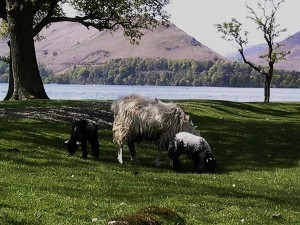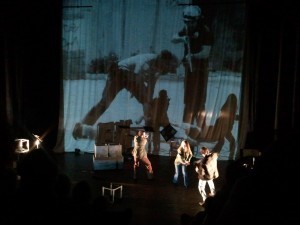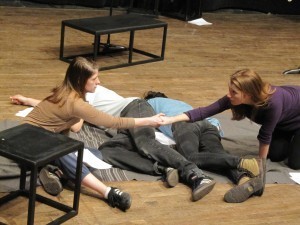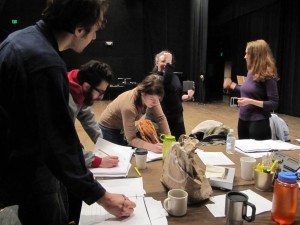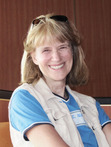Kit Bakke's Blog, page 8
December 4, 2013
What’s Wrong with December birthdays?
Nothing.
People with December birthdays are lucky to celebrate in such cheerful surroundings and good company. Decorations and indulgent food are already built-in. People are in a good mood; kindness and joy are easier to come by.
My birthday is on December 23. Probably not so good for my mother on the day of, but after that, it’s always been fun. When I was a kid, my birthday parties always involved a little craft treat, where my friends and I pinned sequins and glued rick-rack (does everyone remember rick-rack?) onto Styrofoam balls, making decorated snowmen to take home to put on their trees. Not only was the house festooned with lights and colors, but so was the neighborhood—it seemed as if the whole world was gussied up to celebrate my birthday.
I have to add that I wasn’t brought up in any religion, so the message of the whole season has always come across to me as irresistibly welcoming and universal. Nothing divisive, nothing about us vs. them in ‘Peace on Earth, Joy to the World, Good Tidings to All.’
There is the issue of getting only one gift to cover both Christmas and the birthday. Other December birthday friends of mind have complained of that. But I’ve never minded. The general festivity of the time, and the ability to extend the good cheer over days and days always made up for it for me. My dad once said I could celebrate on my 6-month anniversary, June 23, if I wanted to get away from the Christmas competition. Thanks, Dad, but no way.
However, I do have a nephew whose birthday is December 25th, which I put in a different category. Pretty hard to compete with that one. His mom, my hard-working sister-in-law Jane, always did everything she could to make at least part of the day be about him. Tough challenge, for sure. (And his brother’s birthday is January 1—another tough one, I think, because people are all tuckered out and find it difficult to focus on yet another round of cake and gifting.)
But birthdays before Christmas—cheers to one and all!
Here’s just a few of the people who celebrate their birthdays in December: Steve Allen, Woody Allen, Jane Austen, Clara Barton, Beethoven, Steve Biko, Dave Brubeck, Noel Coward, Emily Dickenson, Gustave Flaubert, Margaret Mead, Bette Midler, Isaac Newton, Georges Seurat, I.F. Stone, James Thurber. A motley but creative bunch, I’d say, and I hope they all had, or are having, fun with it.
November 5, 2013
Rambling the English Countryside
England is a little smaller than Louisiana and very densely populated, yet it contains miles of beautiful countryside crisscrossed by 140,000 miles of public footpaths. By controlling suburban sprawl, England provides us with literally thousands of green and pleasant choices for rambling of all sorts, from easy day walks to challenging hikes. 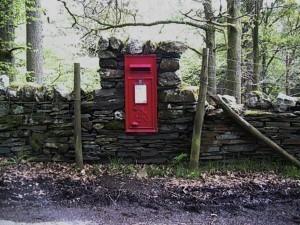 You have your pick of scenery—seaside, mountains, valleys, rocks, farmland, pastures, riversides—often scattered with charming thatched-roof villages, pubs and B&Bs. What could be a better photo to send home than a red British postbox embedded in a stone wall along a country path?
You have your pick of scenery—seaside, mountains, valleys, rocks, farmland, pastures, riversides—often scattered with charming thatched-roof villages, pubs and B&Bs. What could be a better photo to send home than a red British postbox embedded in a stone wall along a country path?
Like Dot and her Aunt Tab in my new book Dot to Dot, I’ve enjoyed many days of walking (the Brits don’t use the term “hike”—it’s either “walking” or “rambling” no matter how steep or muddy) in England. My first big walk was the 190 mile Coast-to-Coast walk from Robin Hood’s Bay on the North Sea to St. Bees Head on the Irish Sea. This path was cobbled together in the early 1970s by Alfred Wainwright, (http://wainwright.proboards.com/) an accountant and lover of solitary rambles. The path winds through the dramatic North York Moors (think Wuthering Heights), the Yorkshire Dales (think Gromit and Wensleydale cheese!), over the Pennines and through the Lake District.
Many walking companies provide guides and pre-booked overnight accommodations along the way. Here’s just one: http://www.coast2coast.co.uk/. I took this shaggy sheep picture walking in the Lake District; footpaths often go right through grazing lands or along the edges of planted fields.
The south of England also has wonderfully ancient paths, including the Pilgrims’ Way, which runs between Winchester and Canterbury, made famous in Chaucer’s Canterbury Tales. The National Trust, however, recommends following St. Swithun’s Way http://www3.hants.gov.uk/longdistance/st-swithuns-way and then the North Downs Way between the two cities, as the historical Pilgrim’s Way is mostly “filled with traffic and isn’t pleasant to walk.” The National Trust http://www.nationaltrust.org.uk/ is a treasure trove of useful information on walking in Britain, as is the Ramblers http://www.ramblers.org.uk/.
Winchester, by the way, is where Jane Austen died, having been taken there by her family from her home in nearby Chawton village with hopes of better medical treatment. 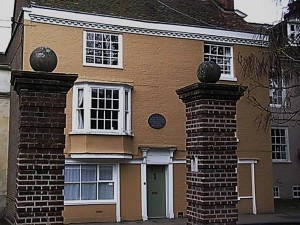 The Winchester house where she died, tended by her sister Cassandra, is today a private home on a quiet street. Can you imagine living in a house where Jane Austen lived her last days? Here is my picture of the house from across the street. The blue oval plaque above the door identifies the house’s historical significance.
The Winchester house where she died, tended by her sister Cassandra, is today a private home on a quiet street. Can you imagine living in a house where Jane Austen lived her last days? Here is my picture of the house from across the street. The blue oval plaque above the door identifies the house’s historical significance.
I hope this gives you a taste of the delights of rambling in England, and I’d love to hear about your favorite walks. See you on the footpath!
October 30, 2013
Frankenstein: The Real Story!!
Ever wonder who invented Frankenstein? Did you know that the movies and cartoons of Frankenstein don’t begin to touch the scariness, horror and sadness of the original story?
The real, original story of Frankenstein was written by an English teenager named Mary Wollstonecraft Shelley. In June 1816, Mary was staying in a rented Swiss villa above Lake Geneva with her boyfriend, the rich, curly-haired romantic poet and political firebrand Percy Bysshe Shelley. They were joined by his friend Lord Byron and Mary’s half-sister, Claire, who had a baby with Byron and was trying to get him to marry her. Mary and Shelley weren’t married either, because he was still married to someone else, but that didn’t stop Mary and him from already having a couple of babies. Later that year, in December, Mary and Shelley did marry, after Shelley’s first wife committed suicide in a park in London.
Lord Byron was a famous poet, and also good-looking and rich; people said he was “mad, bad and dangerous to know.” He was married to a woman who liked mathematics and designed one of the first calculating and computing machines. Byron left his wife to spend time wandering around Europe with Shelley, Mary and Claire. The whole group was basically on the run from stuffy England, their families, Victorian values and the Industrial Revolution. Does this sound like an HBO special?
As the friends were hanging out in their Swiss villa, they decided to hold a contest to see who among them could write the scariest story. Mary was the only one who finished the challenge with a story she called Frankenstein.
The original Frankenstein, of course, is the name of the Monster’s creator, not the Monster himself. In Mary’s book the Monster is just “the Monster.” Victor Frankenstein, who made the Monster, is an orphan. He’s a confused but brilliant scientist, and he wants to create life, perhaps to make up for the death of his parents. The Monster starts out not bad at all. He becomes terrible only because everyone who sees his misshapen, bolted-together body throws rocks at him and pokes him with burning sticks. When people are afraid, they can get mean. After this happens several times, the Monster figures that the only way for him to have a friend would be to have Victor Frankenstein make another Monster like himself. At first Victor says OK, but then says No.
That’s the last straw for the Monster. The final scenes are a terrible chase into the Arctic and it doesn’t end well.
Happy Halloween!
Leave a comment (below) to enter a drawing for a copy of my book DOT TO DOT, which features stories about an adventurous young girl named Dot, whose travels uncover more about Mary Shelley and Frankenstein.
October 28, 2013
Halloween Blog Hop!

What do you know about the real Halloween? The real Frankenstein? What’s really scary? Join the Halloween Blog Hop and find out.
October 18, 2013
DOT’s Back!
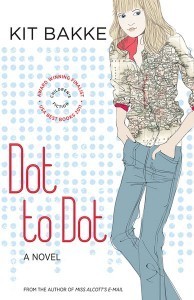 I am very excited to share the news that the latest edition of my second novel, Dot to Dot, has just been published by Booktrope, a dynamic new publisher leading the pack in this brave new world of book choice, production and distribution.
I am very excited to share the news that the latest edition of my second novel, Dot to Dot, has just been published by Booktrope, a dynamic new publisher leading the pack in this brave new world of book choice, production and distribution.
As you may know, I’m a huge fan of trailblazers who aren’t afraid to try something new. When the Booktrope folks called, I knew I wanted to get on board. This new edition of Dot to Dot is everything I wanted it to be.
One of the most important aspects of being an author is to connect with readers. This blog is where you and I can connect directly with each other. I want to know what YOU think about Dot, the plucky young teen who loses her mother in a ghastly accident, and who then embarks on a quest for answers to those big and little questions we all ask ourselves. As a reluctant Dot travels to England, her Aunt Tab slyly encourages her, “Travel isn’t only going from place to place.”
Dot’s story is an inspiring mix of adventure and travel with a dab of literary history thrown in – look out for Dot’s encounters with Jane Austen’s Pride and Prejudice and Mary Shelley’s Frankenstein.
I will be posting photographs of my own travels across the English countryside in the same places that Dot visits in the book. I hope you enjoy this blog as much as you enjoy reading Dot to Dot. Please post your comments and questions below – I will get back to you!
Here’s what Dot to Dot’s reviewers have to say:
“Bakke faces Dot’s pain head-on…the shifting relationship between Dot and her aunt, as well as Dot’s tender memories of her mother, are especially well done. With complex characters and eloquent prose, it’s an absorbing story of a girl’s surprising path through her grief (Publishers Weekly)
“…the story of a girl who goes on a journey of distance that turns into a trip where she discovers a lot about herself as well as the people around her.” (Cynthia Hudson, Mother-Daughter Book Club)
“DOT TO DOT is a banquet table of a book, filled with real and imagined heroes, would-be friends, irritating family, cherished memories, new experiences, and leaps through time… True to the best children’s novels we are treated to a plethora of clues that must be solved and secrets that must be uncovered along the way.” (Lynn Grant, YellowWallpaperWriters)
DOT TO DOT is now available at
September 26, 2013
Hedgebrook December Salon
Join me at the wonderful Hedgebrook writers’ retreat for a day of writing and learning that will inspire you and hone your writing projects with new ideas and approaches. My topic is “To Tell the Truth: Inserting Nonfiction into Fiction and Vice Versa”). We’ll talk about techniques, but also muse on what are the differences between fiction and nonfiction, anyway? and why do we care?
I’ll be joined by writing buddies Anjali Banerjee, Randy Sue Coburn, Stephanie Kallos, Jennie Shortridge and Anna Balint, who will be addressing issues such as place, point of view and how to better use details and secondary characters.
Hedgebrook is an oasis of woodsy charm and terrific food, located on Whidbey Island in Puget Sound, a short drive and ferry ride from Seattle. Check out the details at www.Hedgebrook.org.
June 29, 2013
Postcard from Turkey–with Sidenotes
Two days before the occupation of Taksim Square in Istanbul, my husband and I returned home from our first visit to Turkey. On the plane back to Seattle I watched the Spielberg movie Lincoln, in which Tony Kushner’s script upwraps the eternally unlovely process of legislative lobbying.
Of particular interest to me was the scene in the House of Representatives when the men were shouting their objections to the repugnant idea of adding black men to the voting rolls. “What next,” one Representative said, “women voting?” The Representatives’ catcalls and boo’s doubled in intensity—the thought of women voting was even more horrendous than that of enfranchising black men.
Back to Turkey. Like the US, the Turkish government is designed to be a secular state, separating church and state in a society that is overwhelmingly of one religion: Christianity in the US, Islam in Turkey. Despite (or maybe because of) the current upheavals, I think that if any country can successfully create a truly secular, democratic government in a Muslim society, Turkey is it. Some nation has to prove it can be done.
It’s a daunting challenge for many reasons, not the least of which is the obvious discrimination against women. It frustrated my modern American self no end to see women in that hot climate covered in heat-trapping black cloth from forehead to toes. How can this possibly be the result of free choice? If it were an important manifestation of faith, why don’t men do it? Or, if the reason women have to be covered up (and why does it have to be black?) is to prevent their beauty from fomenting rape and pillage on the streets, why is the only solution to change the behavior of the potential victims rather than the potential perpetrators?
It reminds me of the advice to ‘follow the money’ to find out what’s really going on—here we need only follow the lawmakers, and gosh, they’re all men who have chosen, not unsurprisingly, to enforce onerous restrictions on other people’s lives rather than their own.
These days, however, Turkish streets are not filled with women in black. There are a few, for sure, but many of the women we saw, while their arms and legs were still covered, were wearing tan or beige coats, tucked in at the waist, showing their figures, and stylishly decorated with buttons and piping. Maybe not my choice, but progress nonetheless. And many more women were entirely in western dress. Head scarves, where worn, were bright and patterned. It was not unusual to see groups of women friends, often of several generations, some in black, some in western dress, some in between, all laughing and chatting together.
The landscape in the parts of Turkey we visited was beautiful. The western countryside, where we spent a week visiting Greek and Roman ruins that rival or surpass anything in Greece or Italy, is a land of fertile fields, wildflower meadows, lakes, forests and snowy mountains. We stayed in cobblestoned hill towns as picturesque and charming as in the south of France or Tuscany. The major highways were remarkably modern and smooth.
Istanbul is a great cosmopolitan city of 14 million, set on sparkling waters crossed by high arched bridges and friendly ferries; it is the only city in the world that spans two continents—Asia to the east and Europe to the west. It is full of restaurants and parks and sidewalk street life. Turkish people, both in the city and the country, were invariably welcoming and all had far better English language skills than we had of Turkish. And, important for the tourist, the food is incredibly fresh and simply wonderful. I came home singing the praises of cucumbers, yogurt, mint, honey, tomatoes, almonds, fish, olives, lamb, eggs—all far more tasty than their average American counterparts. There’s just no beating fresh, local and in season.
All this is just to say that I wish the best for Turkish women. Their freedom to choose their own futures matters far beyond their own individual lives, just as Turkey’s future matters beyond its own borders. We had a wonderful visit and we’re going back next year.
February 8, 2013
Weatherman Project!
All four workshop performances of The Weatherman Project sold out at Seattle Repertory Theatre last week. Here’s a pic from the last night’s show.
January 21, 2013
The Weatherman Project is in rehearsals at the Seattle Repertory Theatre!
This is an amazing experience. Can’t believe what talented people I’m working with: Co-author Elizabeth Heffron, director Sheila Daniels and 5 amazing young Seattle actors.
May 22, 2012
The Play’s the Thing
I do not like to do the same thing twice. I’m far more likely to try a new recipe than reprise one I’ve made before. When a dish pleases my family or guests so much that it’s impossible not to repeat, it’s never as much fun to make the second or third time—still just as delicious (maybe even better) but the process has lost much of its charm.
In my writing life (which is far shorter than my cooking life), I seem to be equally resistant to formulas, repetitive structures, sequels or series. My first book MISS ALCOTT’S EMAIL (2006) is an odd amalgam of fact and fiction, research, philosophy and games. Also two recipes. The premise—modern day person communicating with long dead historical person—is not new with me, but it’s infrequently used. Several readers and people in the book business suggested I approach other historical characters with the same treatment. I said no—why do the same thing again? Sounds too much like work.
My second book DOT TO DOT (2011), although it too includes historical people, leans far more to the fiction end of the spectrum than does MISS ALCOTT’S E-MAIL. It also has a far more robust plot and I wrote it with the young teenager, not the adult, in mind.
My current public writing project is even more divergent. I’ve been writing a play! Fortunately, my hubris does not extend to believing that I can, in a reasonable amount of time, learn how to write a script that would produce an evening of gripping, pleasurable and educational entertainment. So I found Elizabeth Heffron www.cornish.edu/theater/faculty/elizabeth_heffron/ , an experienced and wonderfully simpatico co-author. She and I have been working together for almost two years now on our Weatherman Project (working title) script. Collaborative writing has been a joy. Most of an author’s writing time is solitary, zoned out, tethered only to one’s own brain. My time with Elizabeth has sparkled with jokes, shared insights and communal ah-ha moments as we create our joint world on paper.
Last week on Friday May 18, thanks to Elizabeth’s reputation and connections, we were able to present a staged reading of the Weatherman Project at the Seattle Repertory Theatre (www.seattlerep.org). Hearing one’s words spoken aloud by professionals is magical. Our short ten hours of rehearsal time was an incredibly enlightening process—I’ve learned so much about theatre and met so many wonderfully talented people. It’s like I’ve been welcomed into a new and delightful country.
Theatre is a spectator sport—the audience expects to see a time-limited story begin and end while they sit in a constrained physical space. Unlike book-reading, play-watching isn’t self-paced or private. This difference means that words and scenes need to be strung together differently in plays vs. books to allow for the differing circumstances of the watcher vs. the reader.
Pacing, I think, is more critical in plays than in books, to counter the watcher’s relative lack of freedom. In addition, playwrights must depend entirely on dialogue and visual action to express their characters’ humanity—all thinking must be externally visible; no long paragraphs of internal reflection allowed! In return for this apparent limitation, plays have a three-dimensional and collaborative immediacy that adds so much life back into the watcher’s experience.
Plays also live or die on the creative energy and skills of many more people than do books. Although editors, designers and cover artists can improve a reader’s experience of a book, those contributions are minor compared to what directors and actors bring to a play. That’s probably been the most eye-opening for me. I was absolutely enthralled at seeing what the director and the actors did to our words in last week’s staged reading. The value they added to our script was spectacular. Here’s the cast: Kaitlin Ziehr, Adam Standley, Andre Blackburn Nelson , Sara Mountjoy-Pepka and Jessica Martin. Kaytlin McIntyre read the stage directions and the whole thing was brilliantly directed by Sheila Daniels. Public kudos to them all.

